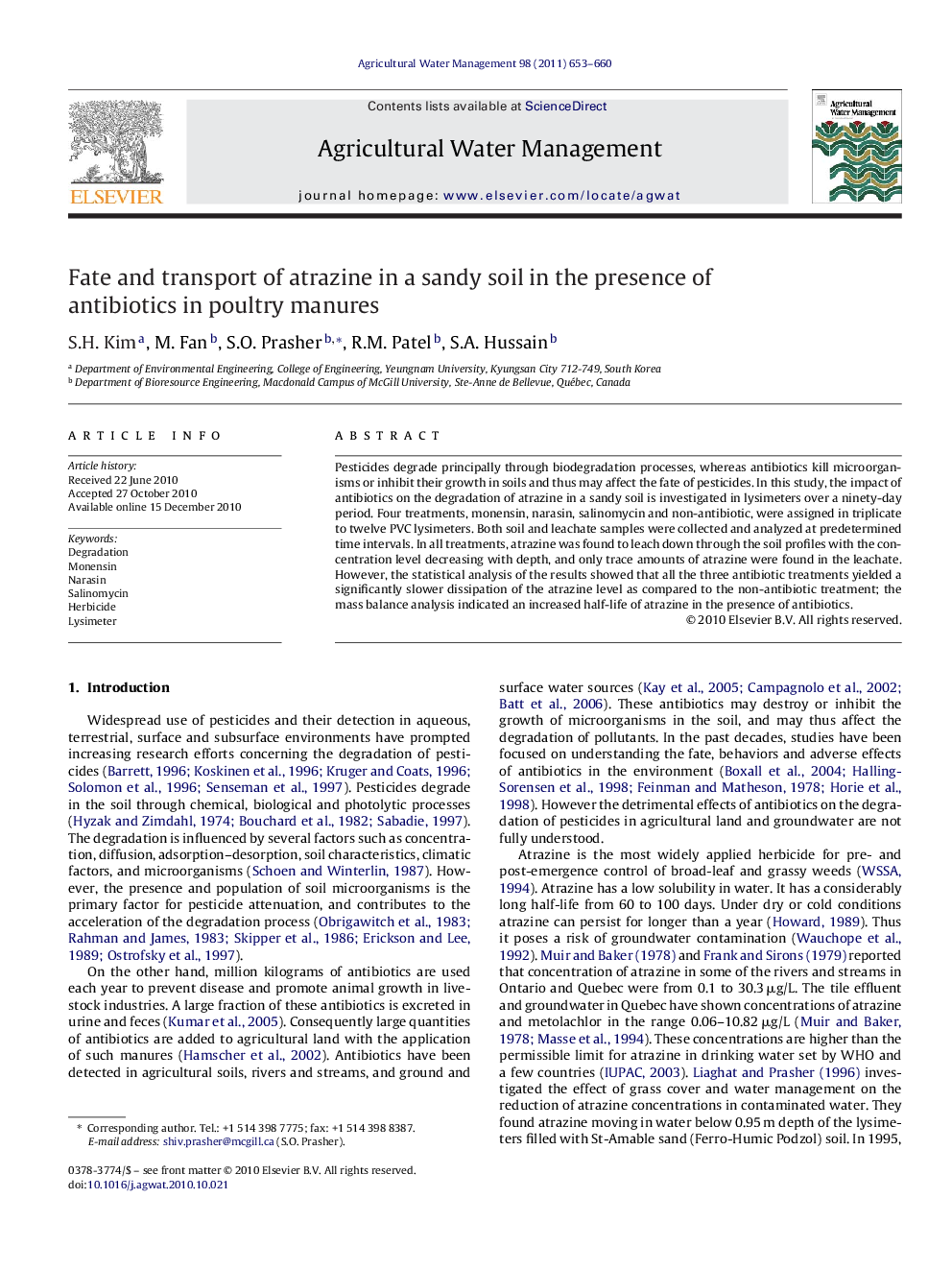| Article ID | Journal | Published Year | Pages | File Type |
|---|---|---|---|---|
| 4479549 | Agricultural Water Management | 2011 | 8 Pages |
Pesticides degrade principally through biodegradation processes, whereas antibiotics kill microorganisms or inhibit their growth in soils and thus may affect the fate of pesticides. In this study, the impact of antibiotics on the degradation of atrazine in a sandy soil is investigated in lysimeters over a ninety-day period. Four treatments, monensin, narasin, salinomycin and non-antibiotic, were assigned in triplicate to twelve PVC lysimeters. Both soil and leachate samples were collected and analyzed at predetermined time intervals. In all treatments, atrazine was found to leach down through the soil profiles with the concentration level decreasing with depth, and only trace amounts of atrazine were found in the leachate. However, the statistical analysis of the results showed that all the three antibiotic treatments yielded a significantly slower dissipation of the atrazine level as compared to the non-antibiotic treatment; the mass balance analysis indicated an increased half-life of atrazine in the presence of antibiotics.
Research highlights▶ Trace amount of atrazine was found in leachate. ▶ The concentration of atrazine was significantly higher in soil in treatments with antibiotics, monensin, narasin and salinomycin as compared to control with no antibiotics. ▶ No significant differences in atrazine concentrations were observed amongst three antibiotic treatments, monensin, narasin and salinomycin.
